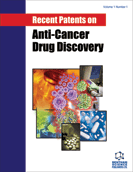Abstract
As the most frequently mutated oncogene in human cancers, the small GTPase Ras is a logical target for anticancer drug development. Ras proteins serve as molecular switches regulating many key signaling processes, including growth-promoting pathways critical for normal cell functions that go awry in cancer. How to interfere selectively and successfully in oncogenic Ras function has proved to be surprisingly vexing. The complexity and importance of controlling correct subcellular localization supports the development of inhibitors that disrupt specific aspects of Ras membrane binding. Here, we concentrate on assays and compounds relevant to inhibiting enzymes responsible for post-translational modifications required for full processing and correct localization of Ras proteins or their targets. Common modifications include farnesylation (by farnesyltransferase, FTase) or geranylgeranylation (GGTase I), proteolysis (Rce1) and carboxymethylation (Icmt), as well as palmitoylation (PATs) and phosphorylation (PKC). We discuss history, current status and prospects of inhibitors designed to block these steps of prenyl and postprenyl processing of Ras itself, or that appear to compete with oncogenic Ras (farnesyl-S-thiosalicylic acid, FTS) for key membrane binding sites that dictate its ability to transduce specific oncogenic signals. Recent patents focusing on GGTIs, Icmt and PATs, and on novel approaches to Ras inhibition, are emphasized.
Keywords: Ras inhibitors, oncogene, Ras pathways, combinatorial Ras therapy, FTI, FTS, salirasib
Recent Patents on Anti-Cancer Drug Discovery
Title: Inhibitors of Chronically Active Ras: Potential for Treatment of Human Malignancies
Volume: 3 Issue: 1
Author(s): Yoel Kloog, Roy Blum and Adrienne D. Cox
Affiliation:
Keywords: Ras inhibitors, oncogene, Ras pathways, combinatorial Ras therapy, FTI, FTS, salirasib
Abstract: As the most frequently mutated oncogene in human cancers, the small GTPase Ras is a logical target for anticancer drug development. Ras proteins serve as molecular switches regulating many key signaling processes, including growth-promoting pathways critical for normal cell functions that go awry in cancer. How to interfere selectively and successfully in oncogenic Ras function has proved to be surprisingly vexing. The complexity and importance of controlling correct subcellular localization supports the development of inhibitors that disrupt specific aspects of Ras membrane binding. Here, we concentrate on assays and compounds relevant to inhibiting enzymes responsible for post-translational modifications required for full processing and correct localization of Ras proteins or their targets. Common modifications include farnesylation (by farnesyltransferase, FTase) or geranylgeranylation (GGTase I), proteolysis (Rce1) and carboxymethylation (Icmt), as well as palmitoylation (PATs) and phosphorylation (PKC). We discuss history, current status and prospects of inhibitors designed to block these steps of prenyl and postprenyl processing of Ras itself, or that appear to compete with oncogenic Ras (farnesyl-S-thiosalicylic acid, FTS) for key membrane binding sites that dictate its ability to transduce specific oncogenic signals. Recent patents focusing on GGTIs, Icmt and PATs, and on novel approaches to Ras inhibition, are emphasized.
Export Options
About this article
Cite this article as:
Kloog Yoel, Blum Roy and Cox D. Adrienne, Inhibitors of Chronically Active Ras: Potential for Treatment of Human Malignancies, Recent Patents on Anti-Cancer Drug Discovery 2008; 3 (1) . https://dx.doi.org/10.2174/157489208783478702
| DOI https://dx.doi.org/10.2174/157489208783478702 |
Print ISSN 1574-8928 |
| Publisher Name Bentham Science Publisher |
Online ISSN 2212-3970 |
Related Books
 33
33
- Author Guidelines
- Bentham Author Support Services (BASS)
- Graphical Abstracts
- Fabricating and Stating False Information
- Research Misconduct
- Post Publication Discussions and Corrections
- Publishing Ethics and Rectitude
- Increase Visibility of Your Article
- Archiving Policies
- Peer Review Workflow
- Order Your Article Before Print
- Promote Your Article
- Manuscript Transfer Facility
- Editorial Policies
- Allegations from Whistleblowers
Related Articles
-
Combinations of Plant Polyphenols & Anti-Cancer Molecules: A Novel Treatment Strategy for Cancer Chemotherapy
Anti-Cancer Agents in Medicinal Chemistry Noncardiac Surgery: Evaluating and Minimizing Cardiac Risk
Current Cardiology Reviews Cardiac Effects of Anabolic Steroids: Hypertrophy, Ischemia and Electrical Remodelling as Potential Triggers of Sudden Death
Mini-Reviews in Medicinal Chemistry Anderson-Fabry Disease in Children
Current Pharmaceutical Design Pleiotropic Effects of Statin in Therapy in Heart Failure: A Review
Current Vascular Pharmacology The Tangled Mitochondrial Metabolism in Cancer: An Innovative Pharmacological Approach
Current Medicinal Chemistry Cord Blood as Diagnostic Window for Preeclampsia
Recent Patents on Biomarkers Pathophysiology of Cardiovascular Diseases and the Role of Vitamins, and Herbal Extracts in the Reduction of Cardiovascular Risks
Cardiovascular & Hematological Agents in Medicinal Chemistry Transcription Factors in Heart: Promising Therapeutic Targets in Cardiac Hypertrophy
Current Cardiology Reviews Phosphoinositide-3 Kinase Signaling in Cardiac Hypertrophy and Heart Failure
Current Pharmaceutical Design Diabetes and Vascular Disease: Is It All About Glycemia?
Current Pharmaceutical Design The Role of Transforming Growth Factor-β in Cardiac Fibrosis
Current Enzyme Inhibition Effect of Proteasome Inhibitors on the AAV-Mediated Transduction Efficiency in Retinal Bipolar Cells
Current Gene Therapy S-nitrosation/Denitrosation in Cardiovascular Pathologies: Facts and Concepts for the Rational Design of S-nitrosothiols
Current Pharmaceutical Design Cellular Senescence in Cardiovascular Diseases: Potential Age-Related Mechanisms and Implications for Treatment
Current Pharmaceutical Design Editorial [ Hot Topic: Modifying Cardiovascular Risk Factors: Novel Cardiovascular Targets for Treatment by Noninvasive Imaging Techniques (Executive Editors: Aurelio Leone and Luigi Landini) ]
Current Pharmaceutical Design Pegylated Liposomal Doxorubicin in Salvage Chemotherapy for Multiple Myeloma Patients
Current Cancer Therapy Reviews Editorial (Thematic Issue: Managing Strategies for Diverse Diseases: Challenges from Bench to Bedside Translation in Successful Drug Discovery and Development (Part B))
Current Pharmaceutical Design From Amino Acids to Proteins as Targets for Metal-based Drugs
Current Drug Metabolism Kinins as Therapeutic Agents in Cardiovascular and Renal Diseases
Current Pharmaceutical Design


























